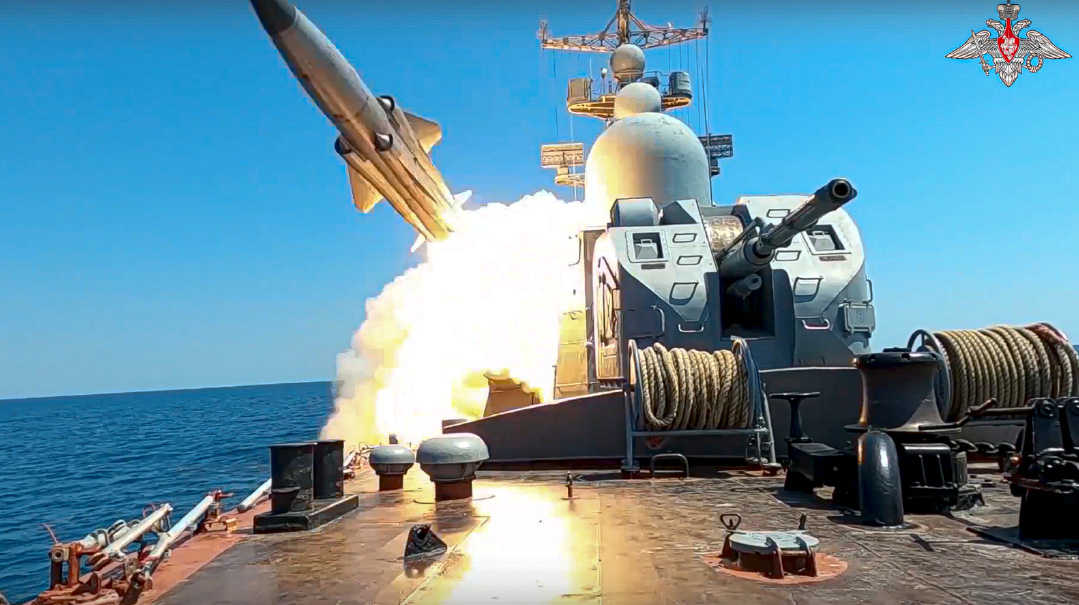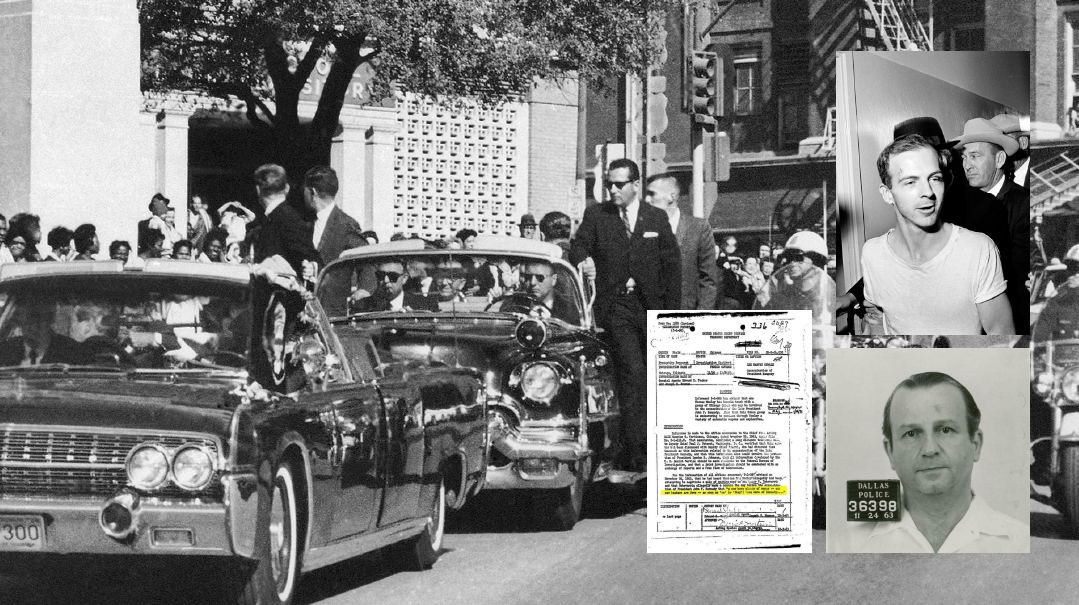Will Putin Give Peace a Chance?
| April 1, 2025Do the Riyadh talks hold promise for a way out of the quagmire? Or is Vladimir Putin stringing everyone along?

Photo: AP Images
O
ne of Donald Trump’s campaign promises has yet to bear fruit — that of ending the war between Russia and Ukraine.
That’s not to say that his attempts at a ceasefire have produced no tangible results. Talks underway among the US, Russia, and Ukraine in Riyadh, Saudi Arabia, are the most direct attempts to end the fighting since the war began. A few weeks of diplomacy yielded two significant if uncertain agreements — but the gap between the combatants remains wide.
A recent agreement to halt offensive attacks in the Black Sea seemed an important step — but then Russia threw in demands for sanction relief that threatened to scuttle the limited truce.
Do the Riyadh talks hold promise for a way out of the quagmire? Or is Russian leader Vladimir Putin stringing everyone along?
Are Russia and Ukraine talking?
Not really.
Officially, Russia will not talk to a Ukrainian government it views as illegitimate. Ukraine, meanwhile, demands that Russia vacate the territory it occupies as a precondition for direct talks.
In Riyadh, American diplomats are meeting with each team separately, shuttling back and forth to try to reach agreements.
“There are no documents signed by all three parties,” says Mark Cancian, senior advisor for defense and security at the Center for Strategic and International Studies. “The US talks to Russia and then to Ukraine. Then everybody comes out and gives their own version of what happened.”
Is there a Black Sea truce?
Depends on whom you ask.
The White House released two separate statements on the matter, one summarizing its points of agreement with Russia, and another for Ukraine.
The most important point common to both versions is that both parties agree “to ensure safe navigation” and to “eliminate the use of force… in the Black Sea.”
This agreement creates a ceasefire in the Black Sea theater while fighting continues elsewhere. The parties also agree to strengthen a prior agreement to cease attacks on civilian energy infrastructure.
Russia added a sticking point, seeking a commitment that America will work toward sanction relief on agricultural exports.
Is Russia undermining the deal?
Unclear.
Shortly after the deal was announced, Russia further complicated the situation by demanding access to a set of international payment systems and an end to sanctions on its agricultural bank, Rosselkhozbank.
While the Trump administration has taken a conciliatory stance toward Russia, sanction pressure remains crucial to its strategy. It is unclear whether the US is willing to open financial doors to Moscow before achieving substantial results.
“Trump views sanctions as key to his ‘art of the deal’ moves here and keeping them in place is the main way to get Putin to the table,” says Glen Howard, president of the Saratoga Foundation. “The conundrum for Trump is how to give Putin enough wiggle room to stay interested while keeping the pressure on.”
In an interview with Newsmax, President Trump posited that Putin’s hard ask might just be the Kremlin “dragging its feet,” buying time to gauge the benefits of peace talks.
Europe not on board
A bigger roadblock is that opening payment systems and several other aspects of rolling back sanctions need agreement from the European Union.
A spokesman for the European Commission closed the door on lifting sanctions as a precondition, setting the maximalist line of “unconditional withdrawal… from the entire territory of Ukraine” before relief could be in the offing.
The EU’s intransience throws wrenches into American peace efforts. When Western European powers expressed disdain for concessions to Russia, the Trump administration locked them out of the peace process, setting up a prickly relationship. That dynamic was further chilled by the recent Signal leak revealing senior administration members’ coolness toward Europe.
Why the Black Sea?
“It’s the low-hanging fruit.” That was US Special Envoy for Ukraine Keith Kellogg’s succinct answer to a Fox News interviewer.
The Black Sea saw active combat for much of the war. Ukraine depleted Russia’s fleet there through drones and missile attacks. A truce there mostly benefits Russia, allowing it renewed access to its seaways and to the ability to reinforce its fleet. Calling for a ceasefire on land would likely be a nonstarter for Moscow.
The Black Sea is a major shipping route for Russian and Ukrainian agriculture exports, key to both economies.
What’s in it for Ukraine?
Materially, not much; symbolically, maybe a lot.
Ukraine’s creative use of lethal projectiles allowed it to win the Black Sea. Its grain shipments are getting to market by traveling a slightly altered route.
What Ukraine can gain is restored trust with the Trump administration.
“It’s an opportunity for Zelensky to blow up the perception that Ukraine is not a team player,” said Mr. Howard. “The Trump administration is trying to approach this as a neutral arbitrator. Zelensky didn’t get that memo and when he came to the White House, he acted like it was still the Biden line of ‘as long as it takes.’ Complying with this agreement is a way to show he got the message and is ready to do his part.”
Is Putin really ready to deal?
While friendly White House overtures got him to the table, Mr. Putin’s price for a ceasefire remains largely the same as three years ago — land concessions and a de-militarized, non-aligned Ukraine. Some think his maximalism is a bargaining tactic. Others posit that Russia means what it says.
“Russia doesn’t seem terribly interested in peace,” says Mr. Cancian. “They believe they are winning the war, and the momentum is on their side.”
With few convinced that Mr. Putin is open to meaningful concessions, questions abound as to what his negotiating team is out to achieve.
“Putin is trying to shift the dialog to be about normalizing relations with the United States and away from Ukraine,” says Mr. Howard.
Can mini deals lead to real peace?
They are worth a try.
“These are useful steps showing that the different sides are willing to talk and think about some ceasefire arrangements,” said Mr. Cancian.
In the few weeks since negotiations began, discouraging signs were punctuated with encouraging ones. After Russia and Ukraine agreed to halt attacks on energy infrastructure, it did not take long before each accused the other of violating the terms.
American mediators worked to produce a list of sites considered off limits. As of this writing, both sides seem to have respected the more defined deal.
“Having periodic meetings to solve one problem at a time makes sense,” says Mr. Cancian. “This is going to be a long process. People should not expect them to sit around a table and solve this quickly.”
(Originally featured in Mishpacha, Issue 1056)
Oops! We could not locate your form.







